USB2GA Information
Getting Started & Troubleshooting
The USB2GA Adapter allows you to easily connect your GA headset to any computer or mobile device via USB.
Table of Contents
- How to Connect the USB2GA Device
- Troubleshooting
- General Testing
- Lower Cost Headset Audio Issues
- Windows
- Mac / OSX
How to Connect Your USB2GA Device
- Connect the provided USB-C cable to the USB2GA Adapter
- Connect the other end of the USB-C cable to your computer or mobile device.
- If your computer or device only has a USB-A port your can use the adapter that is provided
- Connect your GA headset to the USB2GA Adapter.
- Use standard audio controls for your computer/mobile device to select “9er Systems USB2GA Adapter” as your output and input device
Troubleshooting
Troubleshooting often involves trying to identify where the problem exists by systematically testing and verifying parts to identify where the problem may exist. This document is written as a way to try to allow you to test pieces and potentially identify where or why something is not working. Sometimes it is simple to find and correct, other times not so much. If at any point you would like additional help, please reach out to us at info@9erSystems.com We always appreciate it if you also let us know what type of computer you’re using and what headset model you’re using. While there have been very few issues told to us, we will keep track of them all in case there is ever a pattern that emerges. Feel free to reach out to us with comments, both good and bad, as it can always help us make it and other products better.
General Tests
-
With your computer/mobile device on and the device plugged in, but without your headset connected, look inside the jacks plugs and you should see a faint red glow from a led inside one of the plugs.
-
If you do not see the red glow from the led, try unplugging and plugging it back in while looking for the glow - sometimes it’s hard to distinguish in daylight and unplugging it and plugging it back in might help you identify that it is actually there or not. While USB-C cables (and plugs) are supposed to be orientation agnostic, it is possible something (dust?) is blocking a pin or some other cause, so try flipping the plug over just in case too.
- One thing that has been noticed is that some programs (X-Plane) want the device plugged in prior to starting the X-Plane application. If you are having issues but the below testing indicates things are ok, be sure you have it all connected prior to starting your simulator.
- X-Plane has an audio device selection within the application as well. It is worth the time to verify it is selected appropriately as well, or if you wish to go back to using another audio device for a moment and then switch back to your headset later. This can be found on this screen
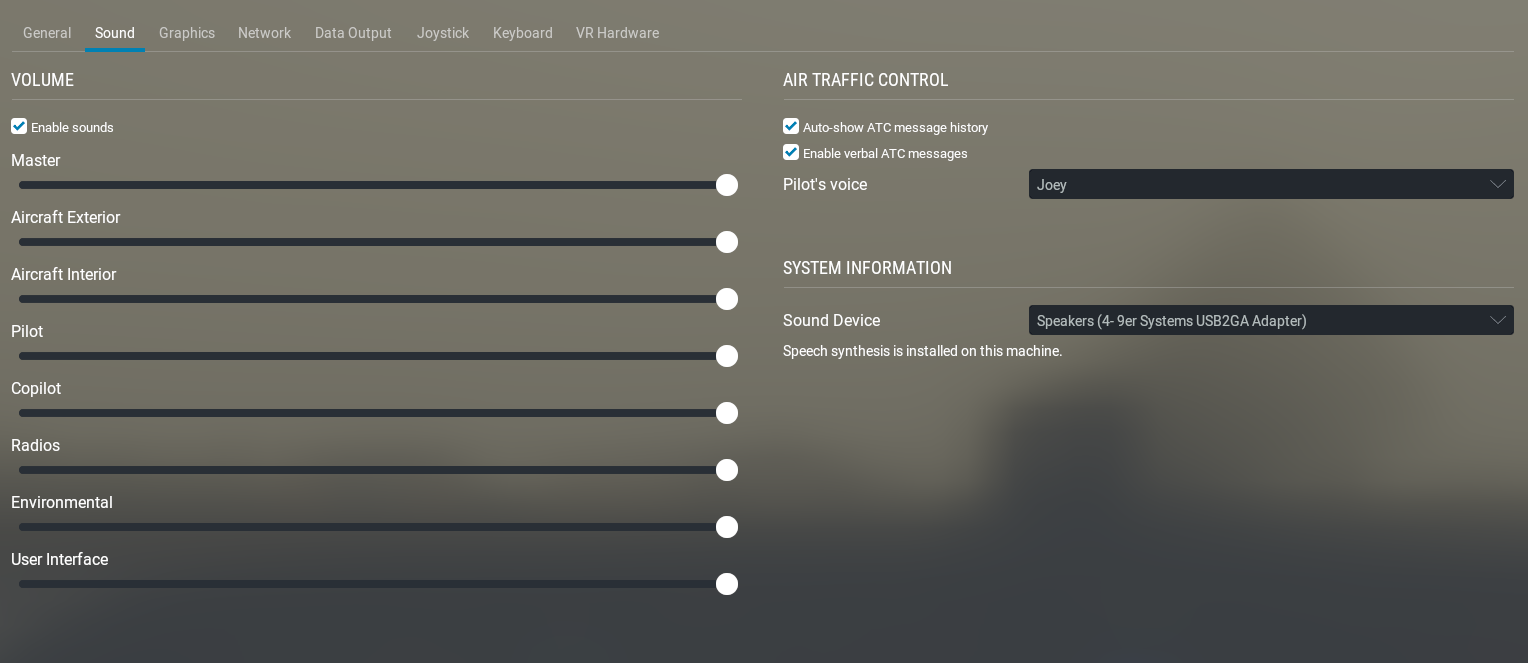
Lower Cost Headset Audio Issues
It has been discovered that some of the headsets are only using the left audio channel for the speakers (typically the lower cost headsets of $400 and under) and are ignoring any right channel audio. The plug being used is designed for audio - having a sleeve, ring, and tip. The ring is common and the tip provides left channel audio while the ring provides right channel audio. On some headsets the right channel (ring) is being completely unused. Since general aviation radios are operated as mono (not stereo) on AM frequencies, it is a reasonable cost cutting measure they have taken.
This can lead to no audio on your computer in certain situations or the lack of “surround sound” on your headset when using the simulator. These headsets are sending the left channel audio to both your left and right ear and ignore the right channel.
If you happen to have your computer’s audio balance set to only be the right channel and no left channel, you will not hear anything on your headset. You must change your computer’s output balance to fix this.
On Windows you can go into the sound settings and select device properties to find this window:
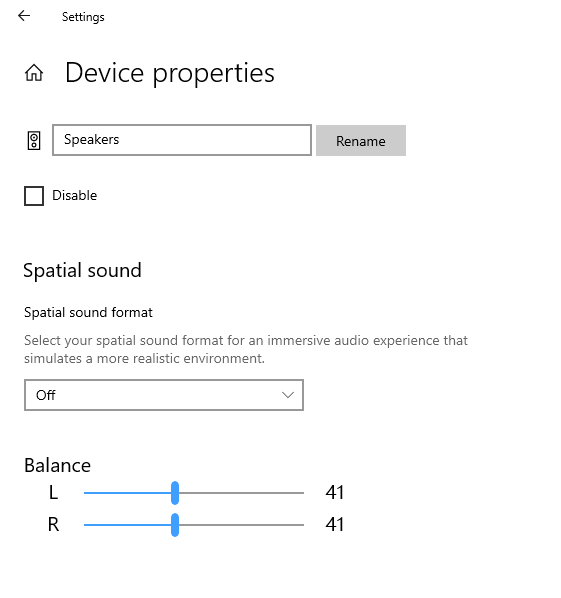
On a Mac this can be found in your sound settings near the bottom.

We are currently testing a short term ($3 fix from Amazon) using bridging adapter such as this 1/4” stereo to mono adapter while we engineer a more long term solution to handle the bridging within our adapter that would not take away the ability to still have a stereo headset those headsets that do support it.
PC/Windows
On a Windows PC you are able to click on the speaker icon in the bottom right of your screen and select from your audio output options. You should see 9er Systems USB2GA Device as an option. If this is not visible there could potentially be an issue with the cable or adapter. If you happen to have another cable and/or adapter, give it a try.
If that does not work, right click on the speaker icon on in the bottom right and select Open Sound Settings
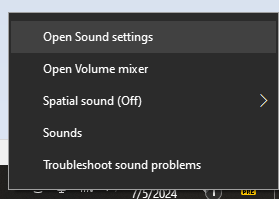
Which will bring you to a screen similar to this
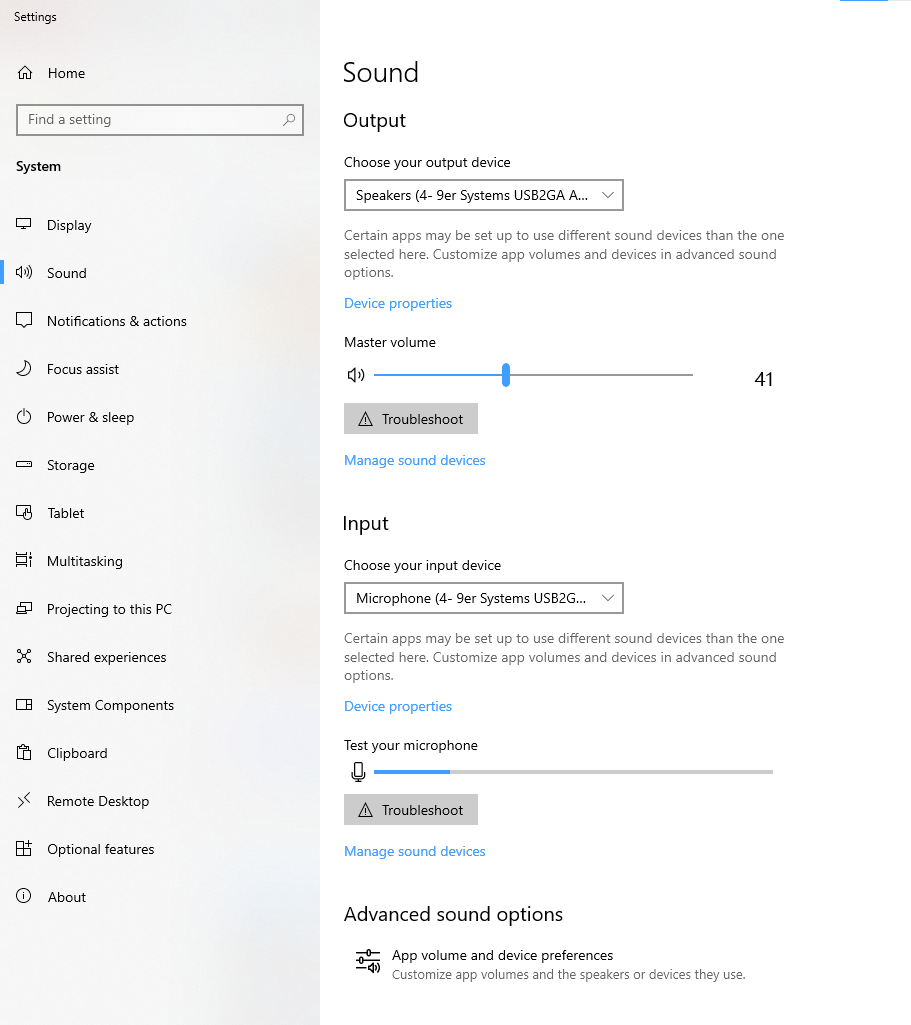
You may also navigate to that configuration screen by typing sound settings in the search box.
Verify (or select) the 9er Systems USB3GA Adapter in the dropdown selector for Output as well as for Input.
The red led flashes anytime data is being transmitted to or from the device and computer. While this does not tell us everything - it does indicate it is receiving audio to the circuit board and chip via the usb cable.
- Most Windows boxes will play a sound when you change the output volume up or down. Doing so should cause the red led you looked for early to blink/flash.
- Another way is to play anything with sound, Youtube or Pandora are easy choices in todays online world, but any MP3 or audio file you have can work just as well.
- Plug in your headset and see if either of those tests produce sound for you.
The output and input devices are not required to be the same device on a computer, if you have already selected 9er Systems USB2GA Adapter as your input device and have your headset plugged in, you should be able to speak into the mic and see the indicator line bounce as you speak.
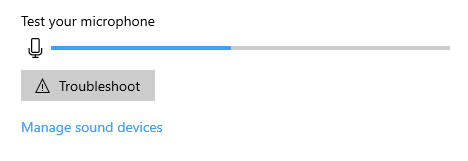
We can test and check a few other advanced settings by selecting Advanced sound options.
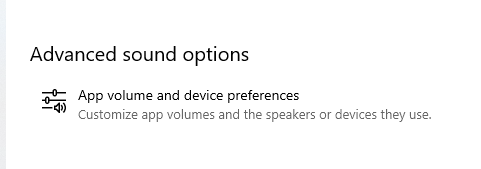
Windows allows you to assign an output and input device specifically for each program running.
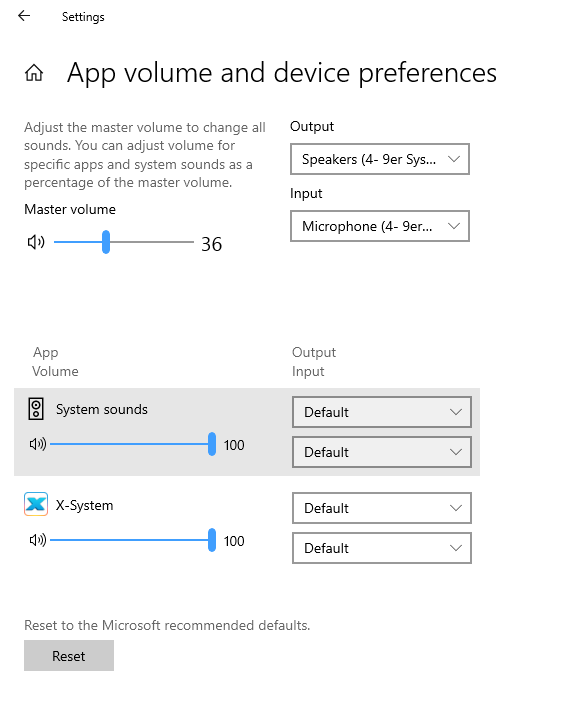
If you have Xplane or MSFS running when viewing this screen, you will see an option for that program like you do in the screenshot above. The top selection boxes are your default sound devices and the application specific selectors can either be set to that default or overrode to a specific device. Allowing for whatever configuration you may want/need.
Mac/OSX
On a mac, you might be used to selecting your audio output devices using the speaker icon in the top right of the bar. You should see 9er Systems USB2GA Device as an option. If this is not visible there could potentially be an issue with the cable or adapter. If you happen to have another cable and/or adapter, give it a try.
This will (may?) only affect the audio output, not the input (mic).
![]()
At the bottom of the audio output selection dropdown is an option for Sound Settings..., select that

otherwise you can manually navigate to your System Settings
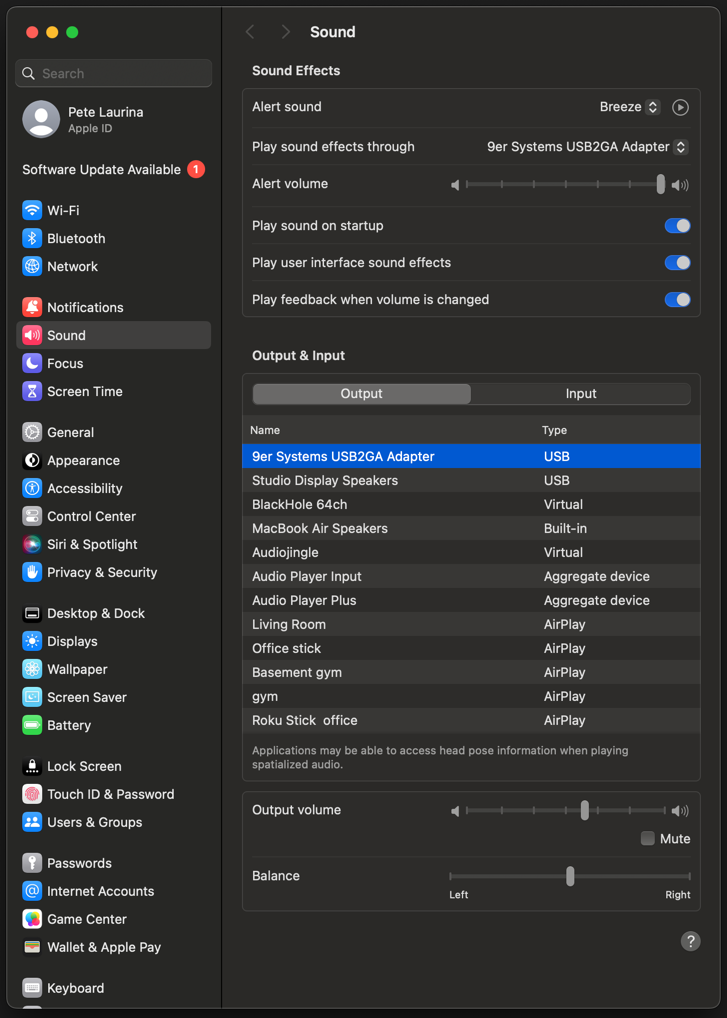
The red led flashes anytime data is being transmitted to or from the device and computer. While this does not tell us everything - it does indicate it is receiving audio to the circuit board and chip via the usb cable.
- One way to test the output of the device is to make sure the option for
Play feedback when volume is changedisonand then change the output volume. Doing so should cause the red led you looked for early to blink/flash. - Another way is to play anything with sound, Youtube or Pandora are easy choices in todays online world, but any MP3 or audio file you have can work just as well.
- Plug in your headset and see if either of those tests produce sound for you
The output and input devices are not required to be the same device on a computer, so to verify the audio input is functional we need to specifically select it in System Settings. First select the Input option. Then select “9er Systems USB2GA Device”.
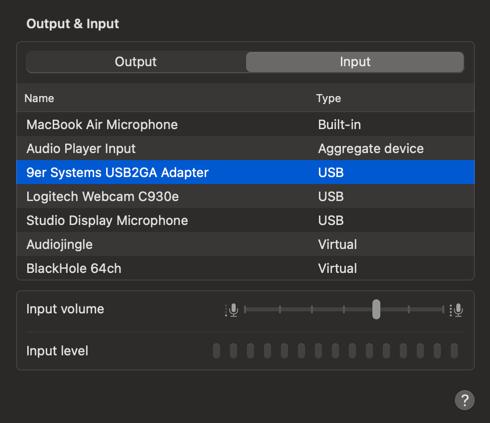
Upon selecting the device as the input device the red led in the device should begin to flash. This tells us that it is transmitting to the computer. This might seem strange, but from a technical perspective “silence” (no mic) is still data. You might also notice the input level bars flickering due to this noise as well.
You can test your GA headset by plugging you headset into the device and, while still viewing the input options, begin speaking into your mic just like you normally would in the plane (remember to keep the mic close to your mouth just like in the plane). You should notice the bars on the input level indicating your talking. If you don’t, be sure to turn up the input volume slider just above it.
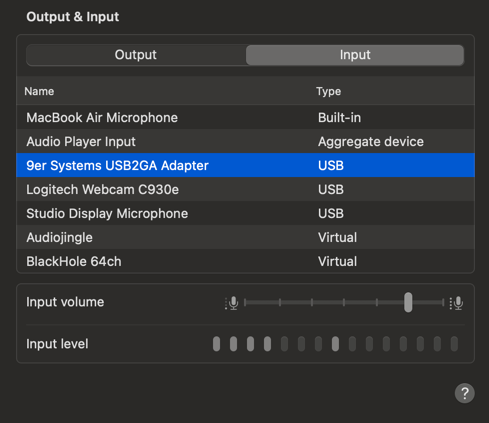
If you go back to the output option, with the same Play feedback when volume is changed set and begin changing the volume, you should hear the ding from it on your headset.
